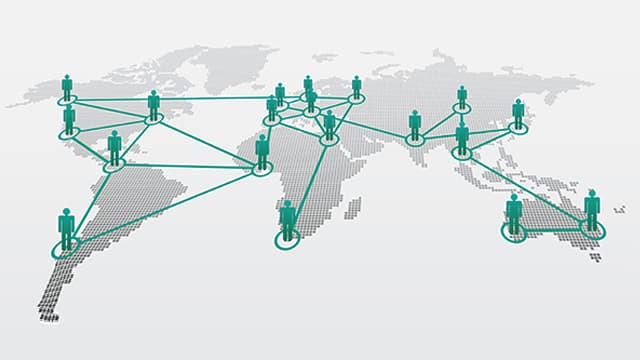With the GLP-1 drugs dominating the weight loss and diabetes markets—and gaining momentum in other disease areas—their global market value is projected to reach $125 billion by 2033.
“The main reason for the explosion of GLP-1 targets is mainly due to the approval of the indication for weight loss,” said Dr. Haiyan Liu, Tigermed GLP-1 team medical co-lead, “The market sales of GLP-1 agonists in 2023 was $36 billion—and the sales of semaglutide will be [just over] $21 billion—second only to Top 1 Keytruda at $25 billion.”
Increasing consumer adoption and ongoing clinical trials have also powered the explosive growth of this drug class. There are nearly 200 pipelines in the clinical stage for the global research and development of GLP-1-related products, explained Dr. Haiyan Liu, and the competition is fierce.
Read on to learn the latest on GLP-1 drug development, future trends, and how to stand out from the competition.
GLP-1 Expansion in the US and Global Markets
GLP-1 drugs are a mainstay in Type 2 Diabetes (T2D)—a position they’ve held for 20 years. The first GLP-1 drug, Byetta (exenatide), received FDA approval in 2005. Since then, other GLP-1 drugs have appeared on the T2D market, most notably Ozempic (semaglutide) in 2017.
Now, GLP-1 drugs have a stronghold in weight loss as well, with FDA approvals for Wegovy (semaglutide) and Zepbound (tirzepatide). Novo Nordisk and Eli Lilly are leading in GLP-1 drug development and could control around 80% of the market by 2030, according to forecasts by Goldman Sachs.
Novo Nordisk brought in $4.3 billion in Ozempic sales during the first quarter of 2024 and another $1.3 billion from Wegovy. Comparatively, Eli Lilly’s revenue reached over 1.8 billion for Mounjaro and $517 million for Zepbound in Q1.
While the FDA approvals for weight loss have powered the rapid expansion of the GLP-1 market, meeting supply demands has proven difficult.
These supply chain challenges have created a bottleneck in patient access, preventing many from receiving GLP-1 treatments despite the high demand. This further intensifies competition and highlights opportunities for new market entrants to meet unmet needs.
“Wegovy has been approved in many countries, but it keeps in short supply due to manufacturing and storage issues, which means a huge market space. Meanwhile, type 2 diabetes indications of GLP-1 agonists have also been hitting the first line, and the indications of CVD, CKD, MASH, OSA, AD are also being studied at full speed.”
--- Dr. Haiyan Liu VP, Deputy General Manager of the Early Clinical Development
Around 70 clinical trials are ongoing investigating GLP-1 treatment across various disease areas. Treating certain chronic kidney diseases, treating Alzheimer’s disease, and reducing heart disease risk are a few recent discoveries from these efforts.
In March, Novo Nordisk shared headline results from their FLOW trial examining semaglutide as an adjunct treatment to improve kidney outcomes in people with T2D and chronic kidney disease. The study showed that semaglutide treatment reduced kidney disease progression and kidney and cardiovascular death by 24% compared to the control group.
An older drug in Novo Nordisk’s GLP-1 pipeline—liraglutide—also showed some promise in a small Phase 2b trial for people with mild Alzheimer’s disease. The drug reduced cognitive decline by 18% after one year of treatment by slowing brain volume loss compared to placebo. These findings bring early hope for the use of GLP-1 drugs in Alzheimer’s treatment. The drugmaker's ongoing EVOKE clinical trials for semaglutide in early Alzheimer’s are expected to readout in 2025.
Eli Lilly also announced Phase 3 trial results this year showing that Zepbound reduced heart failure risk by 38% compared to placebo in adults with heart failure with preserved ejection fraction and obesity. The drug also significantly improved heart failure symptoms in this population.
Altogether, the current GLP-1 market is booming and ripe for continued expansion. In the last three years, there have been over 136,000 patents filed and granted in the pharmaceutical industry for GLP-1 drugs, according to Global Data. With such a competitive market, sponsors will need to know how to separate themselves from the competition.
The Next Frontier: Oral GLP-1 Drugs
“At present, the main R&D trend of GLP-1 agonists is to increase compliance, including the development of oral and long-acting formulations,” said Dr. Haiyan Liu. “And to develop combination formulation or multiple-targets innovative drugs to reduce safety risks, side effects like nausea and vomiting, and muscle loss and weight rebound.”
Development of an effective oral GLP-1 drug could see wider availability and adoption by patients. Oral medications are easier to manufacture, more cost-effective, less burden to the patient, and easier to store. Advantages that solve several of the common pitfalls of injectable GLP-1 drugs today. An oral GLP-1 is unlikely to completely push out injectables but instead provide patients with an alternative treatment option.
Novo Nordisk’s Rybelsus is an oral version of semaglutide used to treat T2D along with diet and exercise. It received approval in 2019 and was the first approved oral GLP-1 treatment for this disease. Several others are currently in development, including Eli Lilly’s once-daily orforglipron and Pfizer’s danuglipron for obesity treatment.
A growing focus on oral GLP-1 treatments highlights the potential for expanding therapeutic options across many disease areas. “Small molecule GLP-1 agonists are a potentially competitive development orientation for sponsors,” said Dr. Haiyan Liu.
By leveraging these strategic opportunities, sponsors can unlock the full potential of GLP-1 drugs in emerging markets. By partnering with an experienced clinical research organization like Tigermed, these sponsors will more easily navigate complex regulatory landscapes and enjoy streamlined trial processes, ensuring faster time to market and higher-quality outcomes.
“Tigermed has accumulated rich experience and resources in the research and development of GLP-1 agonists and hopes to help the sponsor achieve the goal efficiently and quickly,” said Dr. Haiyan Liu.
Want to learn more?
Tigermed has a specialized GLP-1 team that can provide sponsors with tailored and integrated drug development solutions. We have you covered across the full lifecycle from preclinical to Phase IV clinical development.
Click HERE to schedule a meeting with us today, or join us at an in-person event HERE.








